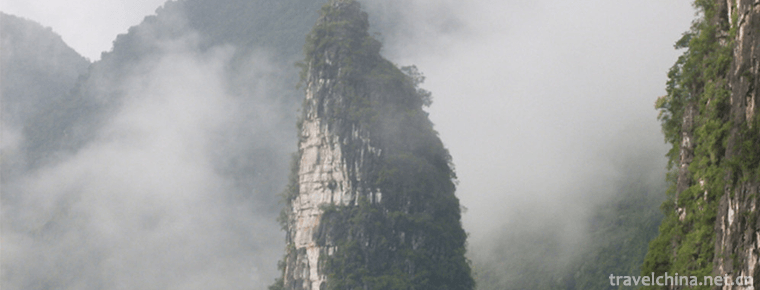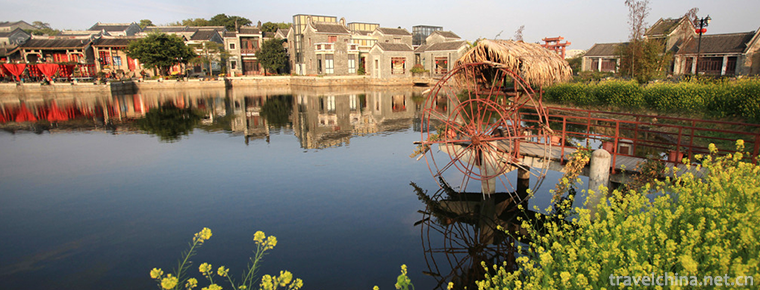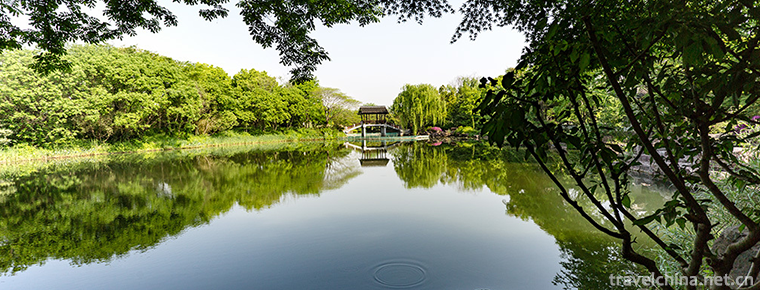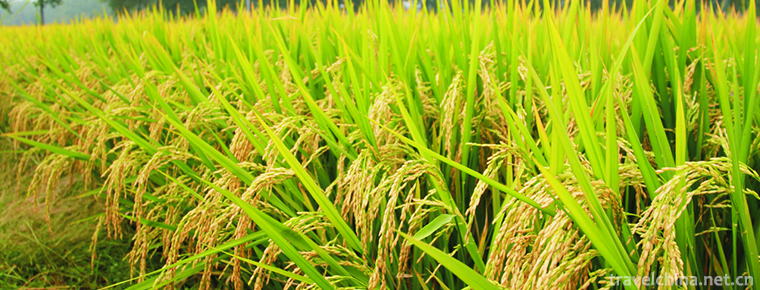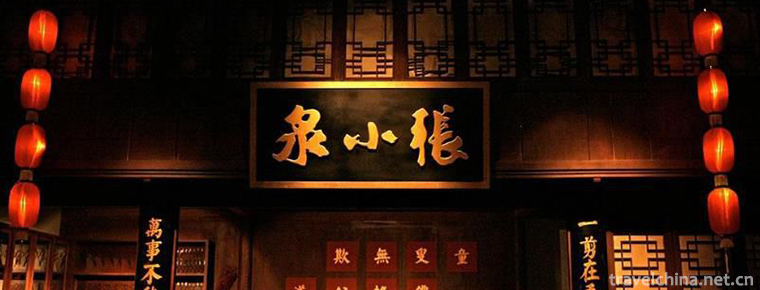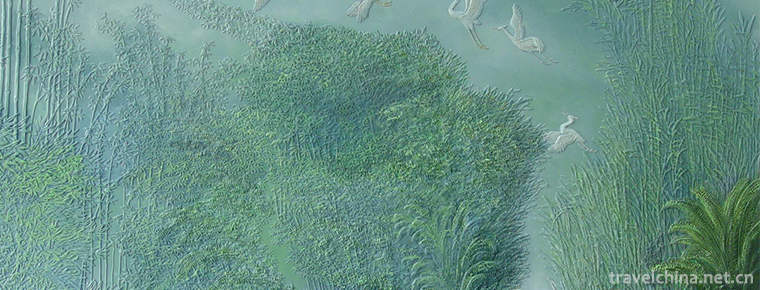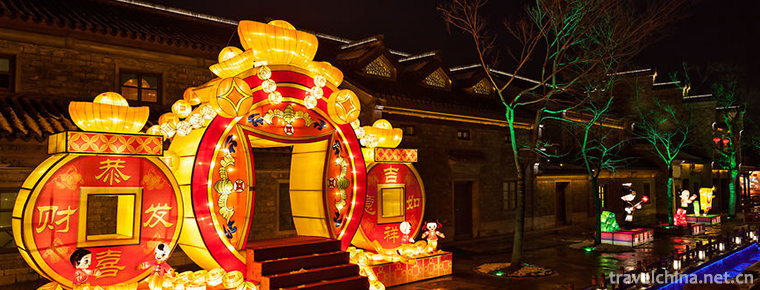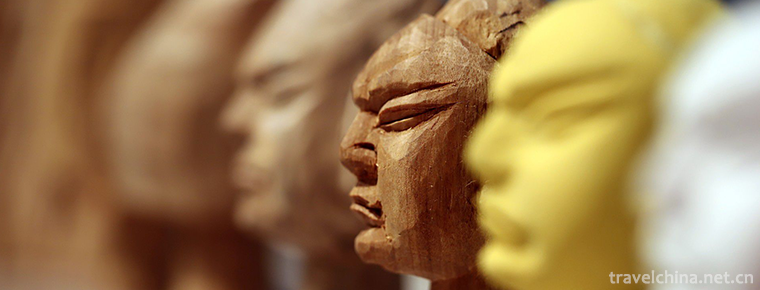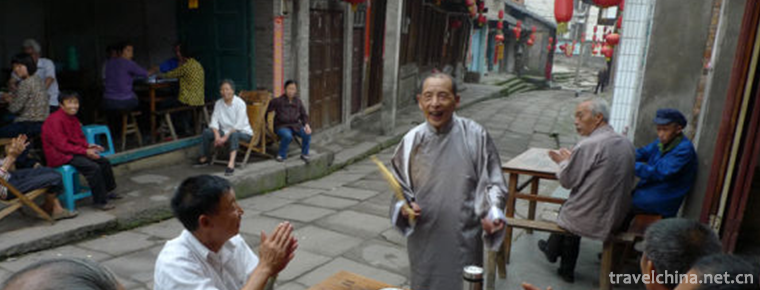Fuzhou Reviews
Fuzhou Reviews
Fuzhou dialect commentary is a unique traditional form of storytelling in Fuzhou dialect of Fujian Province, which is popular in Fuzhou, Fujian Hou, Yongtai, Changle, Lianjiang, Fuqing, Minqing and other counties and cities of Fujian Province, as well as in Fuzhou, where overseas Chinese from Taiwan Province and Southeast Asia live.
On May 20, 2006, the opera was approved by the State Council and listed in the first batch of national intangible cultural heritage list.
Historical origin
It is popular in Fuzhou, Fujian Province, Gutian and Nanping, and it is spoken and sung in Fuzhou dialect. Legend has it that Liu Jingting, a famous Southern Jiangnan storyteller, refused to descend to Qing Dynasty and rushed south to Fujian. He taught his disciples to sing in Fuzhou dialect and commented on the current situation through historical stories, gradually forming a unique style of talking and singing. In ancient times, it was usually on a narrow street. One person said that the audience was sitting in the streets and alleys.
The commentators are mostly one person. They don't need makeup or scenery. They can perform with a cymbal, a wake-up wood, a paper fan, a handkerchief and a high platform with a table. It pays attention to singing, speaking, doing and flowers, and the lyrics are mostly seven words. It often uses dozens of music cards, such as "a flower", "dripping gold", "wave washes sand", "festival height". Taoist language is vivid and popular, with distinct personality. During the performance, the lyrics alternate with the speech, the melody is graceful and melodious. Through facial expressions and body movements, the characters and story plots are highlighted, and the atmosphere is strengthened by cymbals knocking and waking wood hitting the table. "Flowers" refer to gimmicks in performances, in which the bony flower highlights jokes in characters and plots to achieve comic effects; flower arrangement is the intersection of small jokes unrelated to the story. The subjects of Fuzhou's commentary are rich and varied, such as "Chang Jie" (historical story), "Short Interpretation" (martial Arts legend), the books of emperors and ministers, the books of public court (official case), family books, etc. Traditional repertoires are not less than thousands of copies, but also compiled some modern themes, such as Nine Deaths, Old Fisherman's Fighting the Enemy and so on.
There are few historical records about Fuzhou commentary. Only in the late Tang and Song Dynasties did the imperial clans and scholars of Central Plains migrate to Fujian many times, including storytellers. Nancun Dropping Farming Record describes that Qiu Jishan, a famous Linan storyteller, tasted a lecture in Fuzhou at the end of Song Dynasty and the beginning of Yuan Dynasty. Song Dynasty's "poetry praise is speech" inherits the popular style of lecturing, that is, to recite "poetry praise" at the beginning, then turn to the "honest words" of the clip chant, and finally to "end stage chant" with poetry praise, and to "fan sounding cymbals" as an interlude. Fuzhou regional commentary still inherits this form. According to the artists'reputation, Fuzhou commentary was formed in the late Ming and early Qing Dynasties, and artists worshipped Liu Jingting as their ancestors. According to legend, Liu Jingting's great disciple Ju Fu-chen went to Fuzhou Shuangmen Tower to teach apprenticeship and handed it down. Judging from the surviving edition of "Seven Stars White Paper Horse" in Yongzheng and Qianlong years of Qing Dynasty, Fuzhou commentary was very popular at that time. The traditional Fuzhou dialect script was first written between Yongzheng and Qianlong in the Qing Dynasty. In Guangxu, Xuantong and the early years of the Republic of China, the good storytellers were Shuangmen Da (Xu Bingquan), the good storytellers were Houzhou Qing (Ruan Qingqing), Xu Tianding, the good storytellers were family storytellers (Huang Juting), Xu Tiansheng, Xiao Xid (Lin Xiaodi), and the embroidery monk (Lai Desen) adapted the film into a modern bibliography. The artistic form tended to emphasize on the multi-chanting and little white way. Table, increase the expression action. There are also two-file counterparts and female commentaries, and a number of bibliographies reflecting local news facts and folklore have been accumulated. Such as "Yishun elder brother candlestick", "Wang Lianlian Baixiang" and so on. In the 1930s, there were nearly 300 people engaged in commentary in Fuzhou. Artistically, marked by Chen Chunsheng, Huang Tiantian and Huang Zhongmei, they have reached a certain height in script structure, singing tone, arrangement of jokes (making flowers), expression and action, and underdressing art (a method of oral re-creation).
Fuzhou commentary has a patriotic tradition. Before and after the Qing soldiers entered Fujian, the commentary artists knocked half cymbals, implying that rivers and mountains were broken and happy. Because of the implied intention of opposing the cruel repression of the Qing army in the stories, a group of artists were labelled in Wengcheng, Fuzhou, and even blinded. After the Opium War, there was a wave of propaganda against smoking and praise of Lin Zexu. During the 1911 Revolution, there was a preface to "Welcome Mr. Sun Yat-sen to Fujian". During the War of Resistance Against Japan, the commentary circles produced a large number of anti-Japanese prefaces, organized anti-Japanese drama clubs and toured to perform anti-Japanese civilized drama. Huang Zhongmei and others gave a half-hour performance of "lecture" before giving a big book. They reported and analyzed the war situation with the language skills of commentary, which was welcomed by the masses.
In the early days of the founding of the People's Republic of China, Fuzhou commentator's preface and modern commentary welcomed liberation and sang new life. Fuzhou commentator's association was established. It participated in the study course of opera reform jointly organized by the Provincial Literary Federation, the Provincial Opera Reform Commission and the Fuzhou Cultural Department, studied Mao Zedong's literary and artistic thought and the Communist Party's opera policy, and self-taught to eliminate reactionary and obscene programs. Rong, compiling modern books. Fuzhou Quyi Troupe was established in 1960, and a number of artistic talents emerged, such as Chen Changzhi, Wu Letian, Su Baofu, Ye Shentong, Huang Yiqing, Mao Qinming, Tang Zhangwen and the woodlands, Chen Ruyan, Wang Qiuyi and Wei Huizhen, which grew up in the 1980s.
Inheritance significance
Fuzhou Commentary has great historical and cultural value in terms of the shape of accompaniment instruments, the way of recitation and performance, the unique genre of music and the traditional topic of the text. It is called the "living fossil" of ancient folk art. However, the contemporary survival and development of Fuzhou commentary are facing great difficulties, which need to be vigorously supported and protected.
The state attaches great importance to the protection of intangible cultural heritage. On May 20, 2006, the opera was approved by the State Council and listed in the first batch of national intangible cultural heritage list.
Famous figure
Chun Sheng Chen
Comments, with singing, facial expressions, and story plots to shape the characters, his performance of chivalrous and unfortunate women, paintings, shape and spirit have, he is on the stage talking and laughing, natural, humorous, he uses the comic factors of character, language, comic factors, forming a funny burden, this funny burden shakes unconsciously. He became famous in the 1920s. After the founding of New China, he set up schools with students, trained the famous "first seven sons and the last seven sons", and created a regional school.
Huang Tian Tian
He is a fastbook of Fuzhou's commentary. His lips are very fast. He is characterized by rough and bright, but he is fast and tasty, fast and not messy. His teacher was Xiao Xiaodi, one of the eight steps hall. At that time, Xiao Xiaodi was talking about gifted scholars and beautiful women. Xiao Xiaodi wrote Lin Zexu Gong Case. Huang Tiantian handed down this commentary. Later, Huang Tiantian turned to martial arts, which formed his unique style.
Huang Zhong Mei
Huang Zhongmei, who rose in the 1930s, was a famous artist. During the War of Resistance Against Japan, he used the form of a newspaper to comment on Fuzhou. All of a sudden, he became popular in Fuzhou. He used the language skills of comment to propagate current events to the masses and make comments on current events. He combined current events with comment, and spoke to the common people in very popular language and art of comment.


-
Aerhchin Mountains
Altyn Tagh is a mountain range in southeastern the Xinjiang Uygur Autonomous Region, China. The eastern end extends to the two provinces of Qinghai and Gansu.
Views: 253 Time 2018-11-01 -
The peak of unique beauty Duxiufeng
Duxiufeng is located in Jingjiang King's City in the center of Guilin City, Guangxi. It is an inseparable part of the King's City Scenic Area. Gufeng protruding, steep, magnificent, known as "a p.
Views: 153 Time 2018-12-12 -
Side wall ruins
The local people call it "Genghis Khan Wall", also known as "Jinjie Trench". It is the ancient Great Wall ruins spanning the left banner of Sunite, covering 100 square meters..
Views: 181 Time 2019-01-03 -
Laosicheng Site
Laosicheng Site is located in Laosicheng Village, Lingxi Town, more than 20 kilometers east of Yongshun County, Tujia and Miao Autonomous Prefecture, western Hunan Province.
Views: 135 Time 2019-01-29 -
Lingnan Impression
Lingnan Impression Park is located in the south of Guangzhou University Town (Xiaoguwei Island). It covers an area of 16.5 hectares. It is a tourist attraction that gathers sightseeing.
Views: 416 Time 2019-02-03 -
Xixi Wetland Tourist Area
Xixi National Wetland Park is located in the west of Hangzhou City, Zhejiang Province. It is only 6 kilometers away from Wulin Gate, the main city of Hangzhou, and 5 kilometers away from West Lake..
Views: 126 Time 2019-02-25 -
Rice custom
Wannian rice custom and Shangrao Wannian County custom are cultural heritage. Wannian is the "land of rice". The traditional rice custom has been passed down in this area for thousands of ye.
Views: 118 Time 2019-04-26 -
Scissors Forging Technology
Zhang Xiaoquan scissors forging technology, local traditional handicraft in Hangzhou, Zhejiang Province, one of the national intangible cultural heritage..
Views: 131 Time 2019-05-05 -
Ou sculpture
Ou sculpture, commonly known as color oil-pickle sculpture, also known as "color relief", is a unique folk art in Wenzhou, Zhejiang Province, one of the local traditional arts and crafts. It.
Views: 172 Time 2019-06-08 -
Qinhuai Lantern Festival
Qinhuai Lantern Festival, also known as Jinling Lantern Festival and Confucius Temple Lantern Festival, is a popular folk cultural activity in Nanjing. It is mainly held from Spring Festival to Lanter.
Views: 148 Time 2019-06-10 -
Zhangzhou Puppet Head Sculpture
Zhangzhou puppet head carving is a traditional folk arts and crafts in Zhangzhou City, Fujian Province. It belongs to a special skill in the production of puppet stage props. Zhangzhou puppet head car.
Views: 125 Time 2019-07-25 -
Folk Stories of Zouma Town
Folk stories of Zouma Town, Jiulongpo District, Chongqing City, are spread in Zouma Town. The exact age of its origin can not be verified. However, the Zouma Town was established in the late Ming and .
Views: 494 Time 2019-08-16

